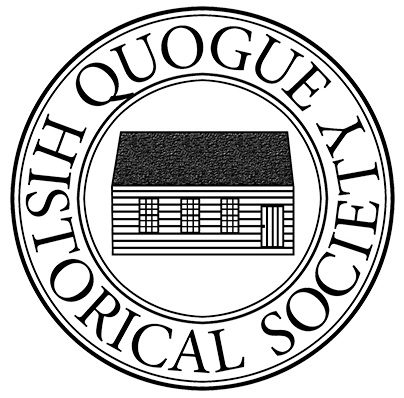1822 Schoolhouse: History

In 1790, the country’s first census recorded 12 heads of households in Quogue and a population of almost 100. The earliest record of schooling in Quogue is from an 1795-96 list of 24 boys and 9 girls who attended during a 3 ½ month session, November 30 to March 15 (image right, Southampton Town Record, Vol.3.) Their teacher, Josiah Foster, who taught school in his home on Quogue Street, received 11 shillings per scholar per quarter year.
In 1813, following the mandate of New York State, the Town of Southampton organized 15 school districts, running numerically from west to east. District “No. 3 includes all the inhabitants residing between Quantic and Wesuck (East Quogue).” By 1820, Quogue’s school enrollment had more than doubled, to 53 students, and a new school was needed. Quogue residents completed their schoolhouse in 1822.

“The people of Quagg have just completed an elegant schoolhouse (for which they paid $350).”
Letter of Jabez Foster to his brother Herman, Quagg, December 14, 1821.
“We have had a busy job, a few individuals, to build a SCHOOL HOUSE.
We got it completed and I do not hesitate to say that it is the best now in the County.”
Letter of Cephas Foster to his brother Isaac in Montrose, PA, January 11, 1822.

From 1822-1876, the Schoolhouse stood at the edge of Quogue Street (above), where Old Depot Road begins. In 1876, when Old Depot Road (then called Post’s Road) was opened, leading to the new train station, the Schoolhouse was moved about 400 yards north.
The Schoolhouse was in use from 1822 to 1893. During those years, it was the only public building in Quogue; when school was not in session, it was used for Sunday school and mid-week prayer meetings.
In the 1829 Burr map of Long Island (below), the schoolhouse is denoted as a meeting house.

By 1850, approximately 45 children attended school in District No. 3. In the 1858 Chace map (below), it is clearly marked as “School.”

In the 1873 Beers map (below), it is marked as “School No. 3.”

In 1893, a new, and larger, two-room school was built on ]essup Avenue (the site of the Quogue Fire Department) and the 1822 one-room Schoolhouse was closed and abandoned. It was rescued in the early 1900s by Abram Post, who moved it to his property just east of the Quogue Library and used it as a workshop (below).


In 1947, the Post family donated the Schoolhouse to the Quogue Library to be used as a museum operated by the Library’s newly formed Historical Committee. It was moved for a third time to the grounds of the Quogue Library in 1948 and, in 1949, opened as a museum (below).


In 1977, the Quogue Historical Society was organized as a separate nonprofit entity, successor to the Library’s Historical Committee. In the 40-plus years since, the Historical Society has maintained and operated the Schoolhouse as a museum for exhibitions and tours. Until the opening of the Pond House (below) in 2011, the Schoolhouse was the only exhibition space available to the Historical Society.

In 2019, as part of the Quogue Library’s expansion, the Schoolhouse made its fourth move, to a more prominent location on the east side of the Library’s grounds near Quogue Street (below), where it awaits exterior and interior restoration.

